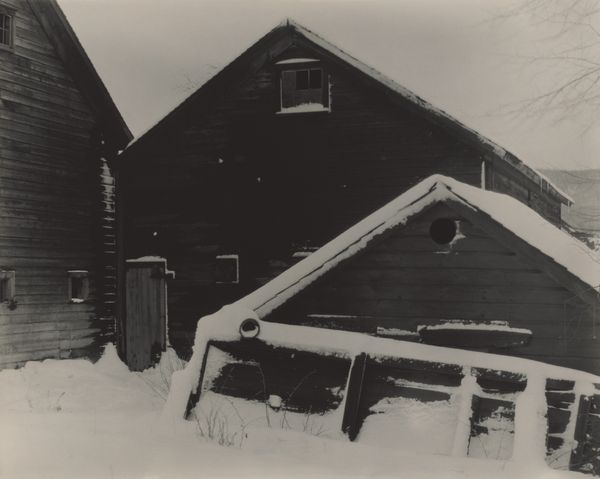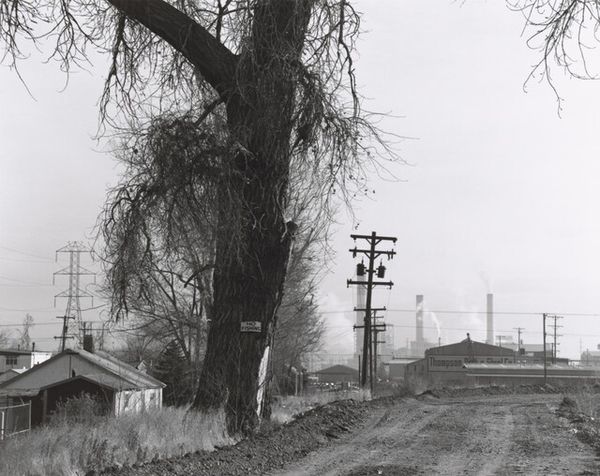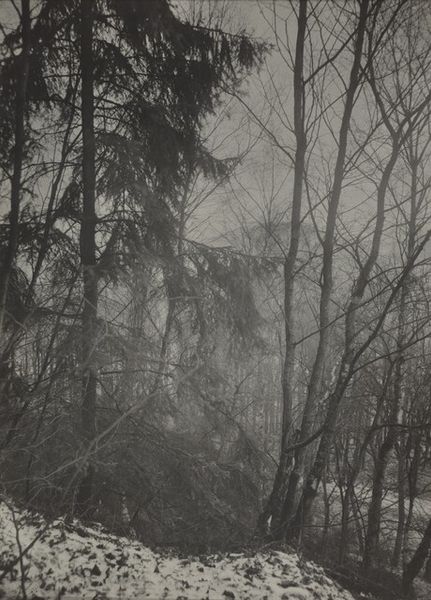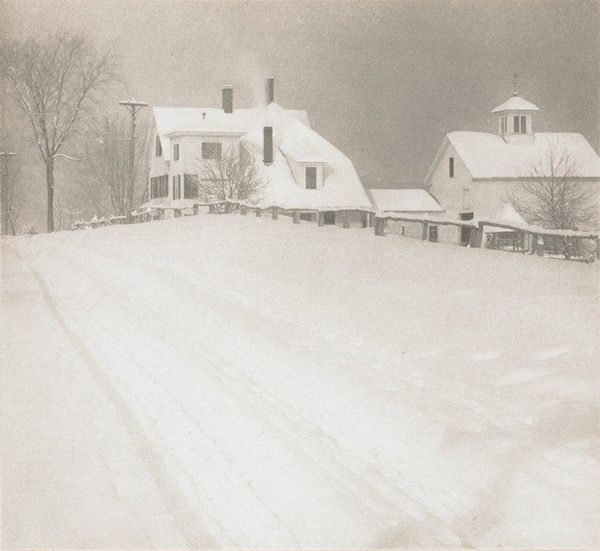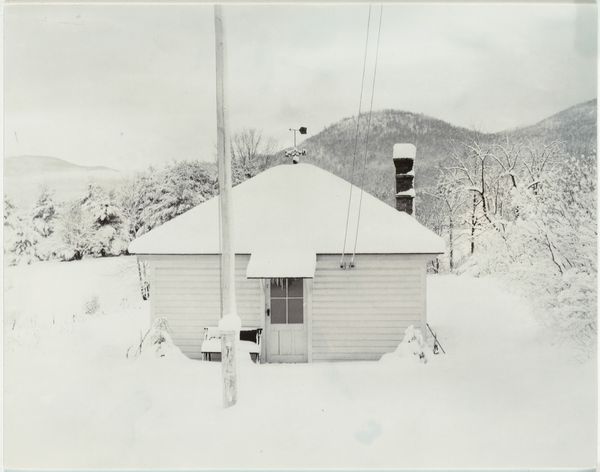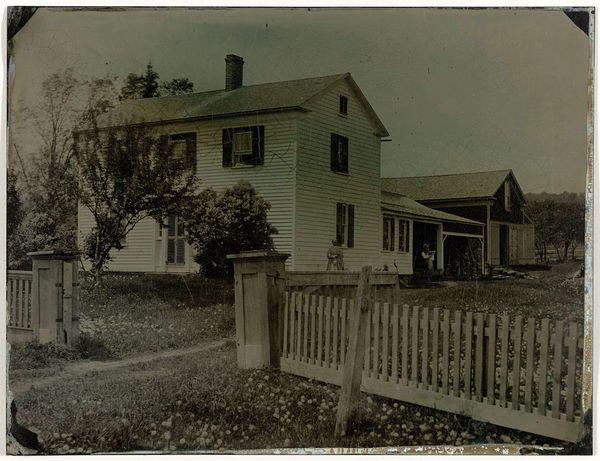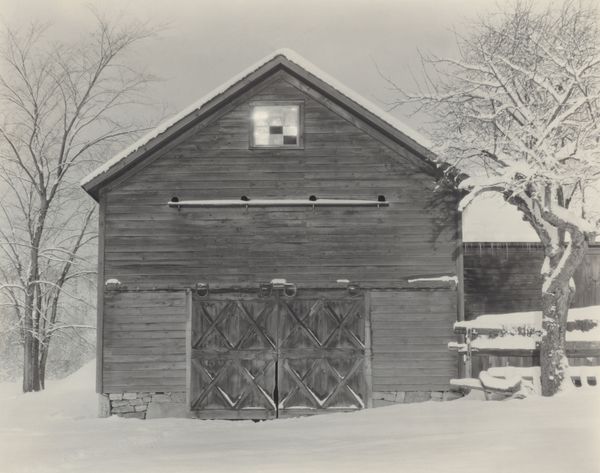
photography, gelatin-silver-print
#
black and white photography
#
landscape
#
photography
#
black and white
#
gelatin-silver-print
#
monochrome photography
#
genre-painting
#
monochrome
#
realism
Dimensions: image: 44.8 × 30.1 cm (17 5/8 × 11 7/8 in.) sheet: 50 × 40 cm (19 11/16 × 15 3/4 in.)
Copyright: National Gallery of Art: CC0 1.0
Curator: This is "Deer Slaying, Martins Creek, Pennsylvania" by Larry Fink, a gelatin-silver print taken in 1978. It presents a rather stark depiction of rural life. Editor: It’s undeniably arresting. The immediate visual impact is, frankly, quite unsettling. The raw presentation of the deer hanging there...it speaks volumes. The textural quality is really prominent; you can almost feel the cold of the tree bark and the animal's fur. Curator: Fink was really invested in exploring class and social dynamics. While known for his images of high society, this piece turns his gaze towards a different segment of the population, documenting a common practice in rural communities, and revealing a certain tension with our own sensibilities regarding food and its procurement. Editor: That’s an interesting point. You have this domestic scene unfolding in the background—a house, what looks like dogs. This makes a counterpoint between domesticated comfort and raw, wild existence. It invites examination of how this act ties to systems of self-sufficiency and survival in the landscape of 1970s Pennsylvania. The material presence of the dead animal is not just image, it implies use and work. Curator: Absolutely. Also consider the compositional choice. By framing the deer so centrally, and capturing it in such stark detail via gelatin-silver print, Fink doesn’t allow us to look away from the reality of the act. This contrasts sharply with more idealized representations of rural life in popular culture, revealing the harder edge. The visual rhetoric makes us think about our own relationship to consumption and materiality. Editor: Yes, it forces confrontation. What stories were told, how did these things become 'okay', the very process of taking life and making it banal through material use. By exhibiting a scene such as this, one confronts urban spectators with often unseen social facts and tacit agreements. It gives one much to think about, historically. Curator: It certainly challenges any romanticized notions. Thank you for shedding some light on those societal implications. Editor: And thank you for emphasizing Fink’s process. Together, this photograph, its methods, and context expose important narratives of place and existence.
Comments
No comments
Be the first to comment and join the conversation on the ultimate creative platform.
